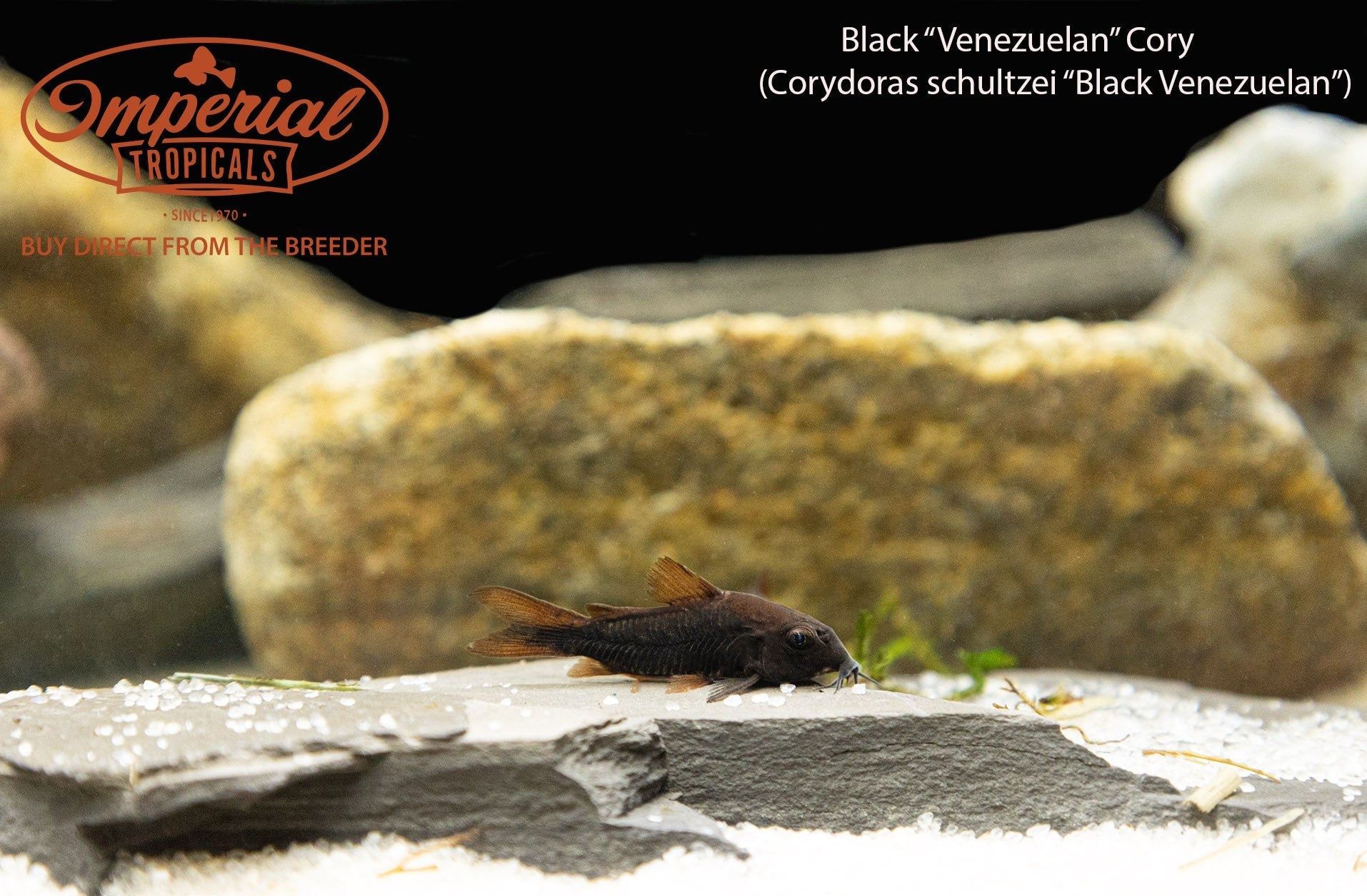
Remarks: The black Venezuelan Osteogaster is a very striking Corydoradinae with their jet black color and reddish fins. This dark color makes them look fantastic in a planted tank with a light colored substrate. They are a color morph of the Peru gold stripe Osteogaster produced through selective breeding in Germany and thus do not occur in the wild.
Because of their common name, many mistakenly believe the black Venezuelan Osteogaster to be a black form of the Venezuelan Osteogaster, Osteogaster sp. “Venezuelanus”. This is false as they are two different species despite there being a black form, albeit one that is extremely rare and almost never seen available, of the Venezuelan Osteogaster. The two can be told apart by how in adult specimens, all of the fins of the black Venezuelan Osteogaster are rusty orange or red while only the dorsal and adipose fins of the Venezuelan Osteogaster are this color with the rest being gray.
Black Venezuelan Osteogasters were previously classified as Corydoras schultzii, but were reclassified as Osteogaster schultzii upon publication of a phylogenomic analysis in 2024 that reclassified many species in the Corydoradinae subfamily.
Corydoradinae are small, peaceful catfish that are active shoalers and will stay near conspecifics, making for a lovely sight. They feed by searching through sand with their barbels, making such a substrate necessary for their long-term health. Gravel substrates tend to be abrasive and damage the barbels, leading to infections and an inability to find food.
While these friendly catfish are willing to swim with other species of Corydoradinae different from their own, this does not provide the same social need as being kept with members of their own species. Because of this, it is highly recommended to keep at least six of each species of Corydoradinae present in the aquarium and only mix species if one has the space to keep at least six of each.
Corydoradinae are often looked at as "scavengers," but they should be treated in a similar fashion as the rest of your fish. They are omnivores and require a mixed diet. Sinking prepared foods are readily accepted, as are frozen and live foods such as brine shrimp, blackworms, and bloodworms.
